Abstract
A simple impression-plate technique has been used to investigate the survival of four thermophilic campylobacter strains applied to fingertips. Campylobacters suspended in 0.1% peptone water and dried on the fingertips survived for different periods of time ranging from less than 1 to greater than or equal to 4 min. However, campylobacters suspended in chicken liquor or blood survived for much longer periods. The most resilient organism was Campylobacter jejuni NCTC 11392 which, when suspended in 50% horse blood, survived for an hour. Suspensions containing 10(6)-10(7) organisms prepared in 50% blood and dried on to fingertips were removed by thorough hand washing with either soap and water or water alone followed by drying on paper towels, but persisted on wet hands. The organisms were also eliminated by wiping the hands with a tissue saturated with 70% isopropyl alcohol for 15 sec.
Full text
PDF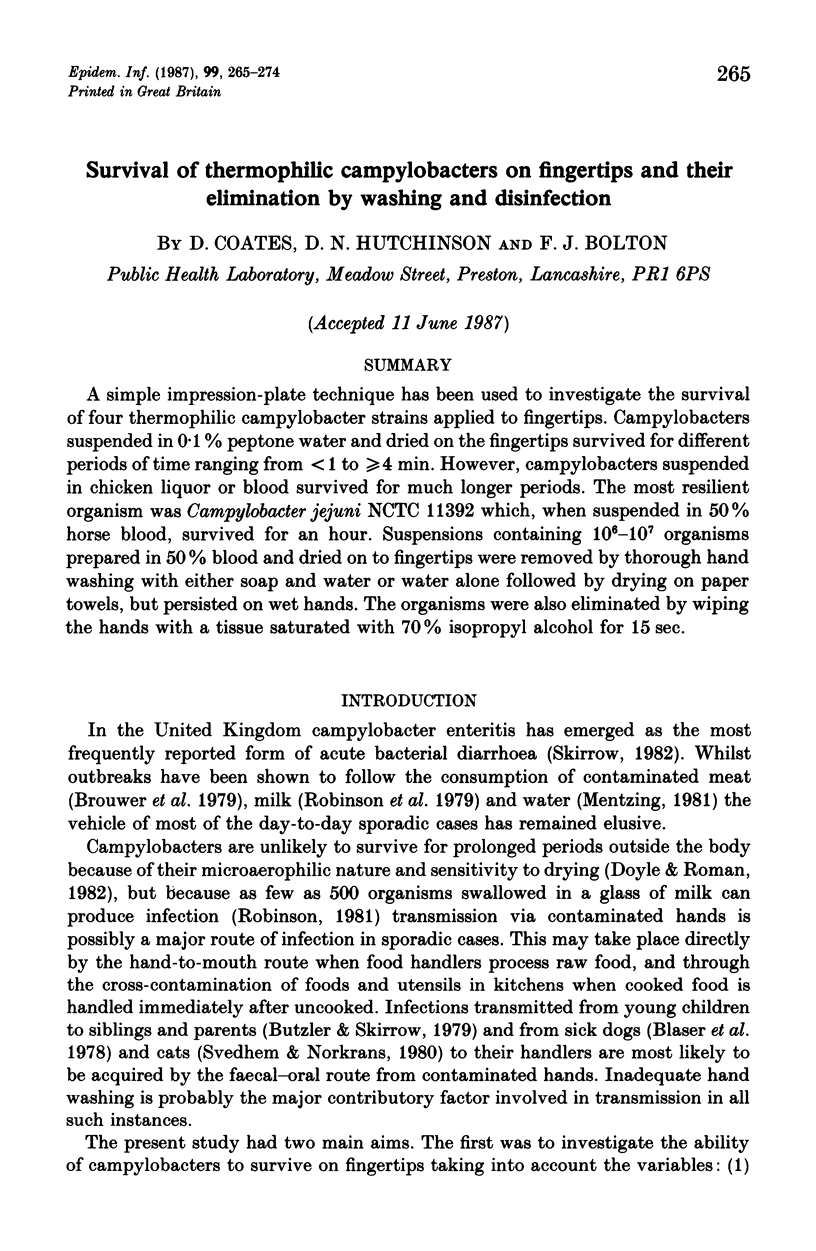

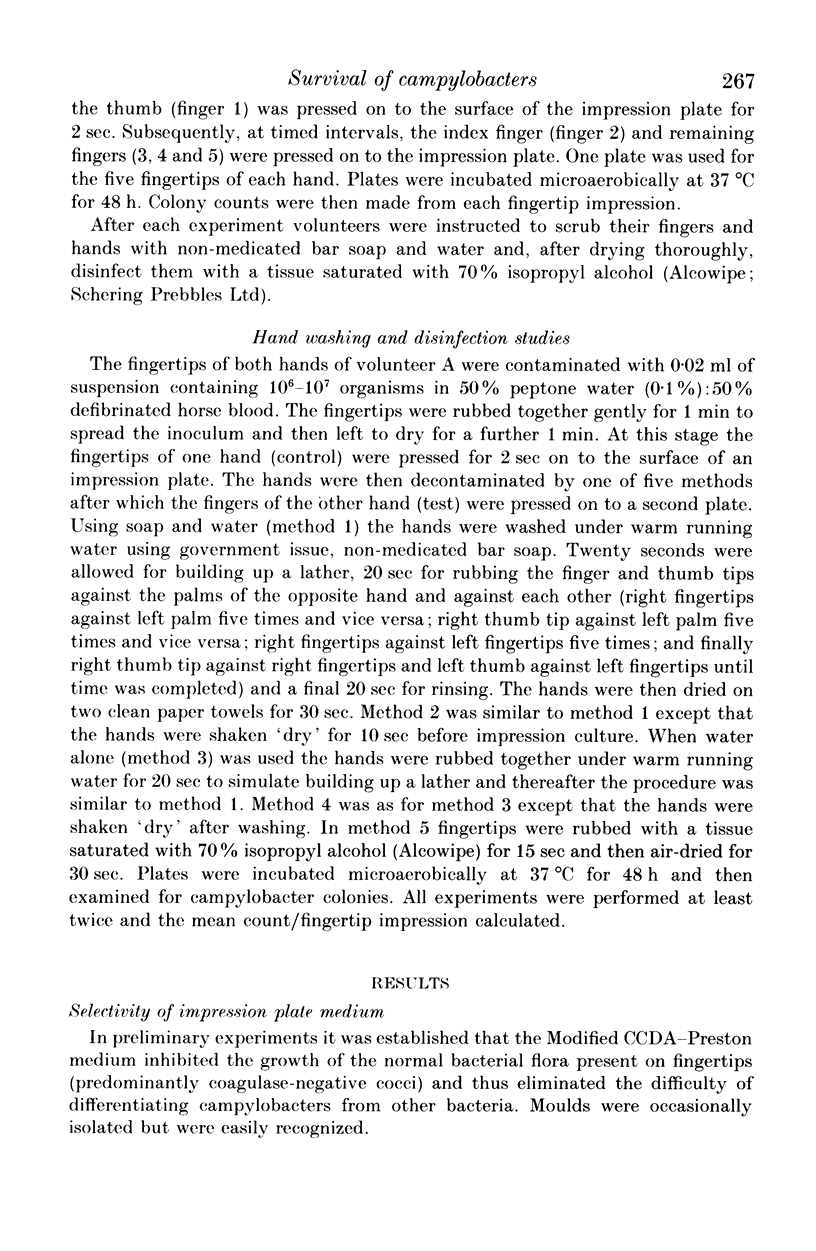
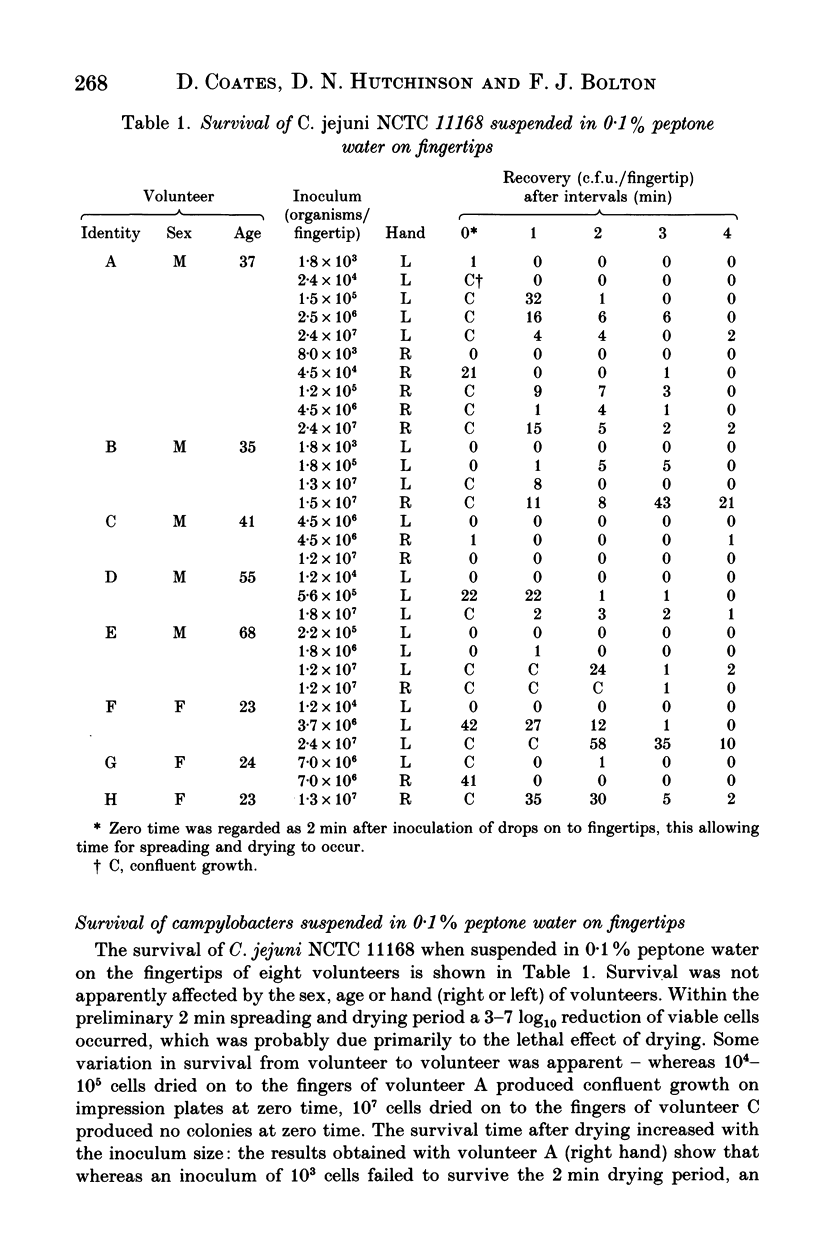

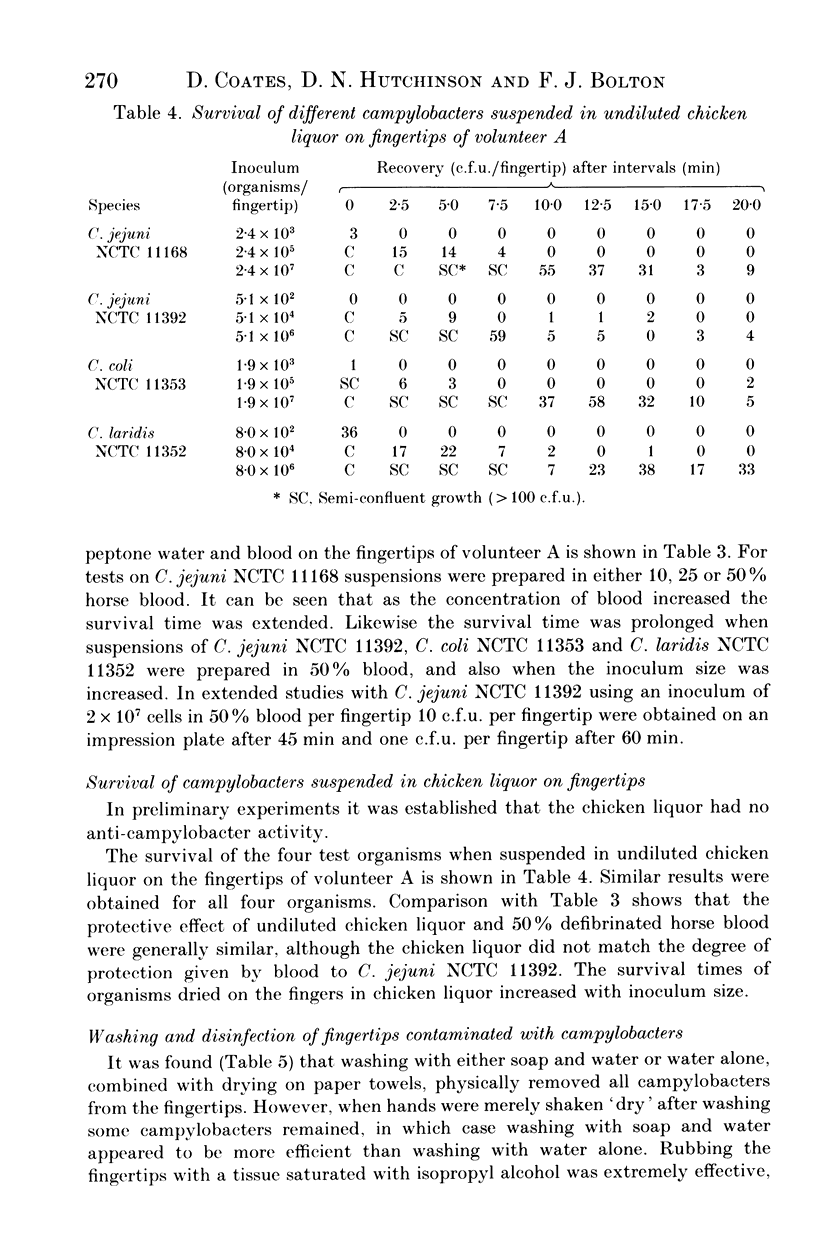
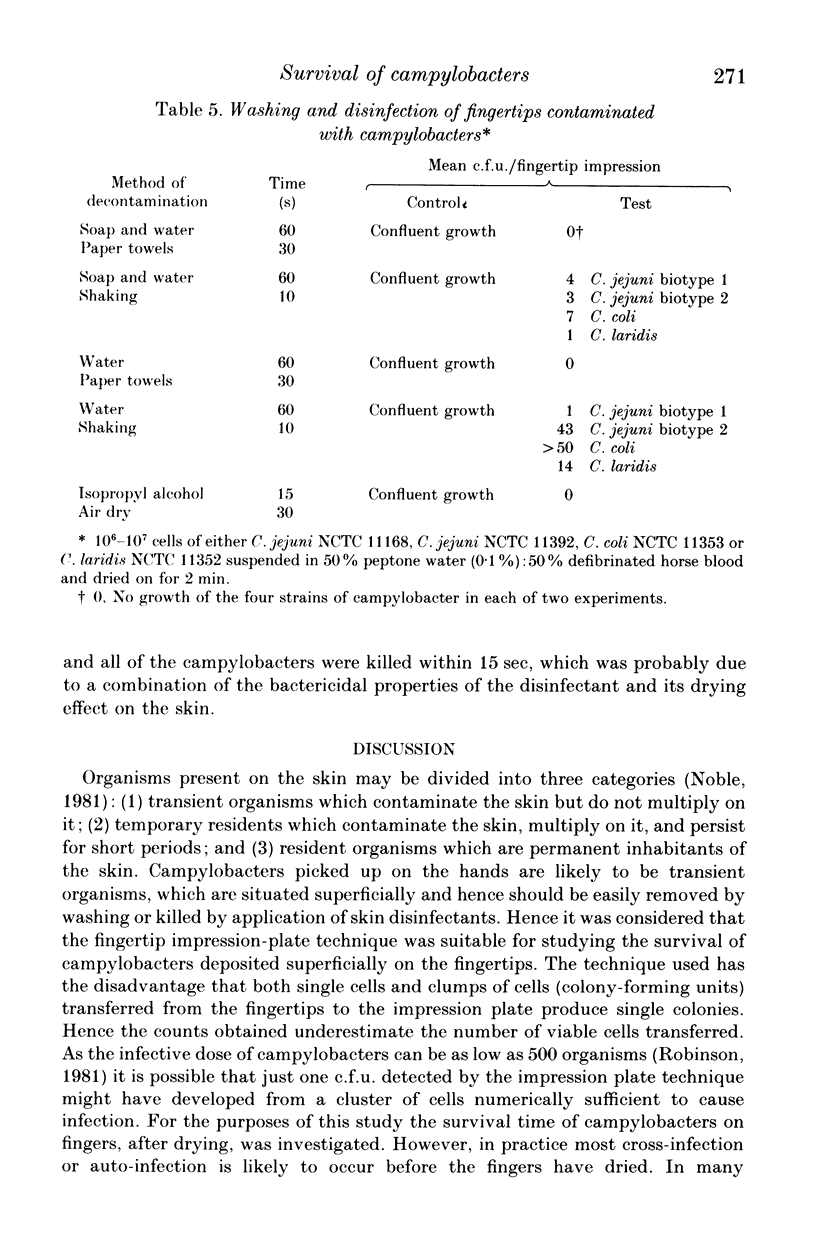
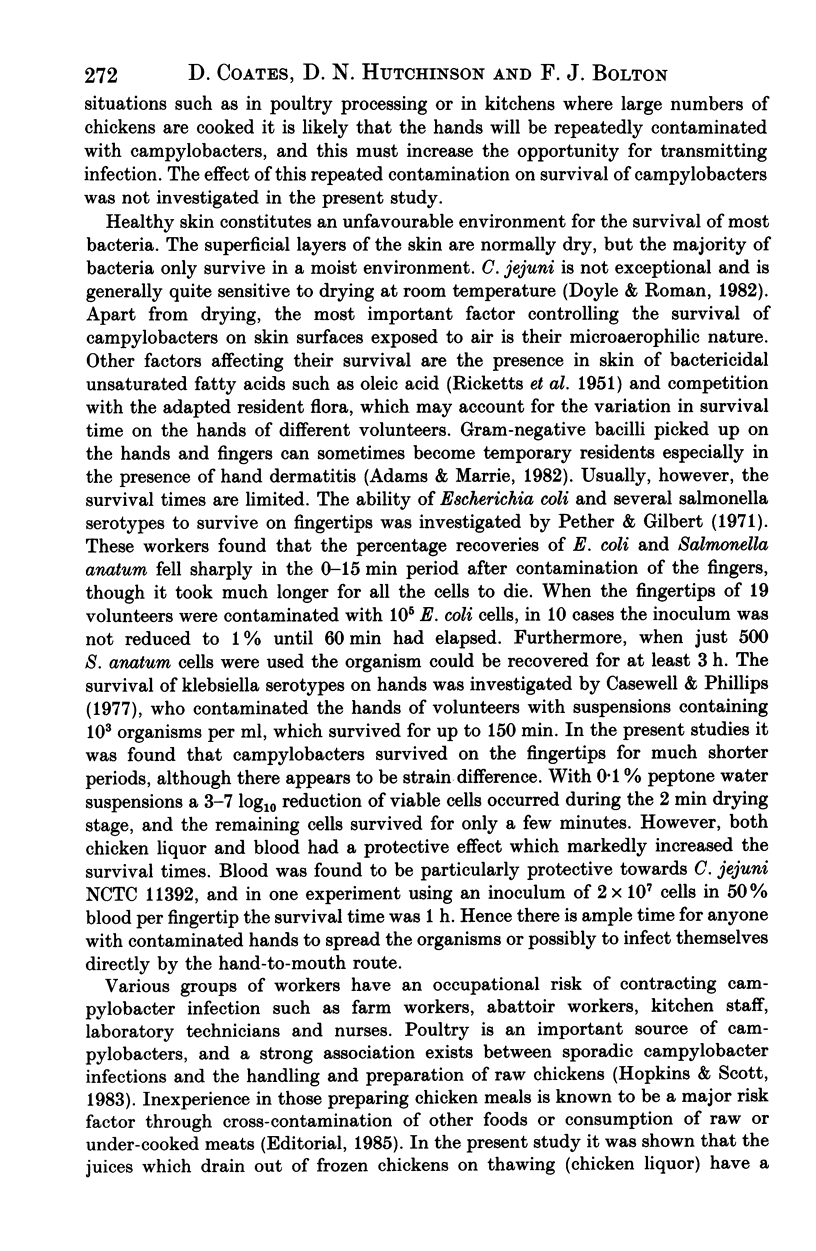
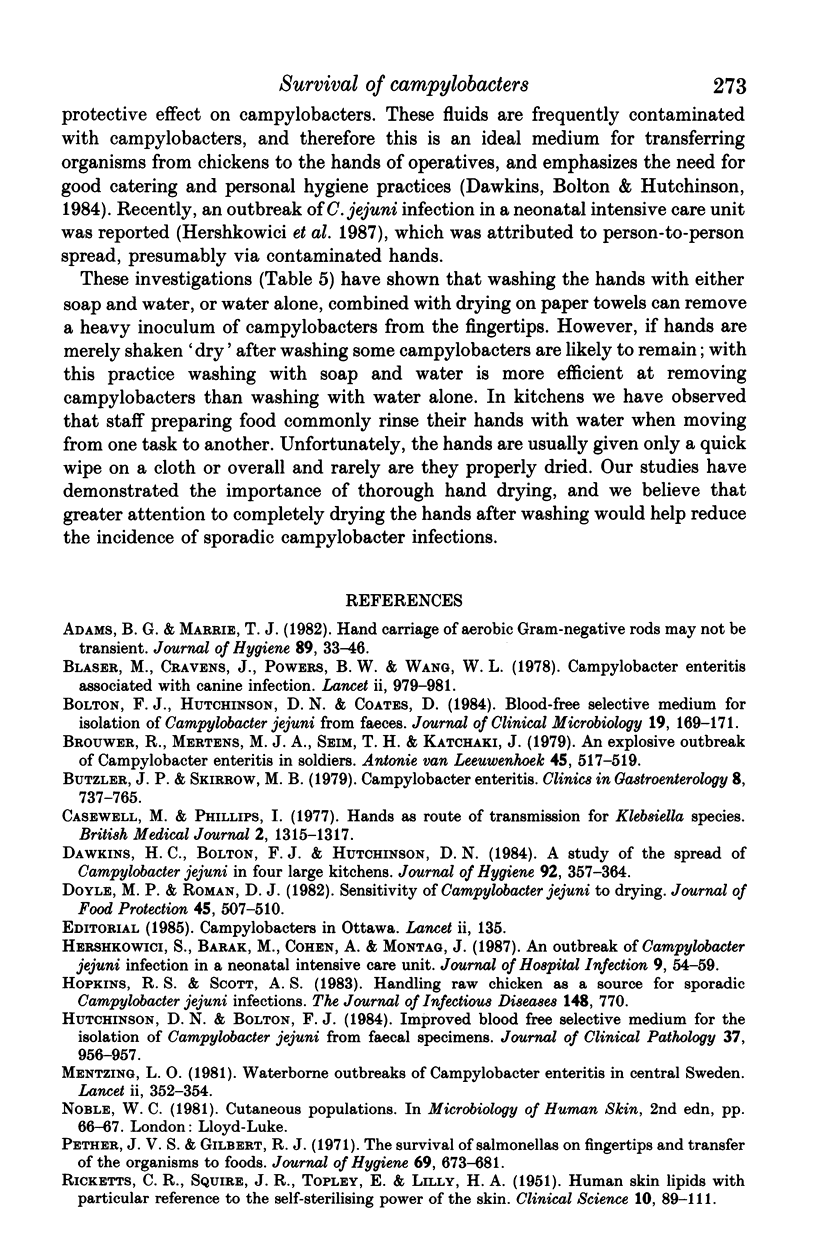
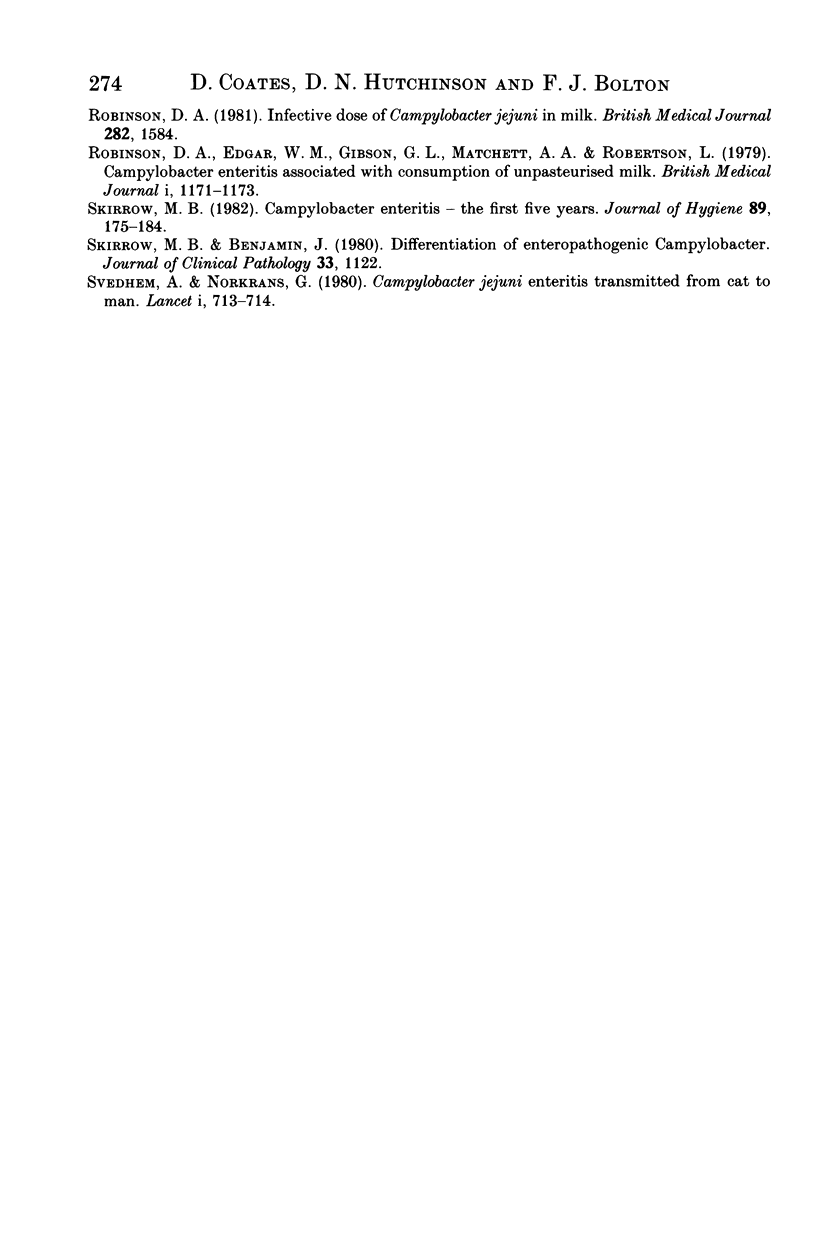
Selected References
These references are in PubMed. This may not be the complete list of references from this article.
- Adams B. G., Marrie T. J. Hand carriage of aerobic gram-negative rods may not be transient. J Hyg (Lond) 1982 Aug;89(1):33–46. doi: 10.1017/s0022172400070510. [DOI] [PMC free article] [PubMed] [Google Scholar]
- Blaser M., Cravens J., Powers B. W., Wang W. L. Campylobacter enteritis associated with canine infection. Lancet. 1978 Nov 4;2(8097):979–981. doi: 10.1016/s0140-6736(78)92541-2. [DOI] [PubMed] [Google Scholar]
- Bolton F. J., Hutchinson D. N., Coates D. Blood-free selective medium for isolation of Campylobacter jejuni from feces. J Clin Microbiol. 1984 Feb;19(2):169–171. doi: 10.1128/jcm.19.2.169-171.1984. [DOI] [PMC free article] [PubMed] [Google Scholar]
- Brouwer R., Mertens M. J., Siem T. H., Katchaki J. An explosive outbreak of Campylobacter enteritis in soldiers. Antonie Van Leeuwenhoek. 1979;45(3):517–519. doi: 10.1007/BF00443293. [DOI] [PubMed] [Google Scholar]
- Butzler J. P., Skirrow M. B. Campylobacter enteritis. Clin Gastroenterol. 1979 Sep;8(3):737–765. [PubMed] [Google Scholar]
- Casewell M., Phillips I. Hands as route of transmission for Klebsiella species. Br Med J. 1977 Nov 19;2(6098):1315–1317. doi: 10.1136/bmj.2.6098.1315. [DOI] [PMC free article] [PubMed] [Google Scholar]
- Dawkins H. C., Bolton F. J., Hutchinson D. N. A study of the spread of Campylobacter jejuni in four large kitchens. J Hyg (Lond) 1984 Jun;92(3):357–364. doi: 10.1017/s0022172400064573. [DOI] [PMC free article] [PubMed] [Google Scholar]
- Hershkowici S., Barak M., Cohen A., Montag J. An outbreak of Campylobacter jejuni infection in a neonatal intensive care unit. J Hosp Infect. 1987 Jan;9(1):54–59. doi: 10.1016/0195-6701(87)90096-x. [DOI] [PubMed] [Google Scholar]
- Hopkins R. S., Scott A. S. Handling raw chicken as a source for sporadic Campylobacter jejuni infections. J Infect Dis. 1983 Oct;148(4):770–770. doi: 10.1093/infdis/148.4.770. [DOI] [PubMed] [Google Scholar]
- Hutchinson D. N., Bolton F. J. Improved blood free selective medium for the isolation of campylobacter jejuni from faecal specimens. J Clin Pathol. 1984 Aug;37(8):956–957. doi: 10.1136/jcp.37.8.956-b. [DOI] [PMC free article] [PubMed] [Google Scholar]
- Mentzing L. O. Waterborne outbreaks of campylobacter enteritis in central Sweden. Lancet. 1981 Aug 15;2(8242):352–354. doi: 10.1016/s0140-6736(81)90658-9. [DOI] [PubMed] [Google Scholar]
- Pether J. V., Gilbert R. J. The survival of salmonellas on finger-tips and transfer of the organisms to foods. J Hyg (Lond) 1971 Dec;69(4):673–681. doi: 10.1017/s002217240002194x. [DOI] [PMC free article] [PubMed] [Google Scholar]
- Robinson D. A., Edgar W. J., Gibson G. L., Matchett A. A., Robertson L. Campylobacter enteritis associated with consumption of unpasteurised milk. Br Med J. 1979 May 5;1(6172):1171–1173. doi: 10.1136/bmj.1.6172.1171. [DOI] [PMC free article] [PubMed] [Google Scholar]
- Robinson D. A. Infective dose of Campylobacter jejuni in milk. Br Med J (Clin Res Ed) 1981 May 16;282(6276):1584–1584. doi: 10.1136/bmj.282.6276.1584. [DOI] [PMC free article] [PubMed] [Google Scholar]
- Skirrow M. B., Benjamin J. Differentiation of enteropathogenic Campylobacter. J Clin Pathol. 1980 Nov;33(11):1122–1122. doi: 10.1136/jcp.33.11.1122. [DOI] [PMC free article] [PubMed] [Google Scholar]
- Skirrow M. B. Campylobacter enteritis - the first five years. J Hyg (Lond) 1982 Oct;89(2):175–184. doi: 10.1017/s0022172400070704. [DOI] [PMC free article] [PubMed] [Google Scholar]
- Svedhem A., Norkrans G. Campylobacter jejuni enteritis transmitted from cat to man. Lancet. 1980 Mar 29;1(8170):713–714. [PubMed] [Google Scholar]


